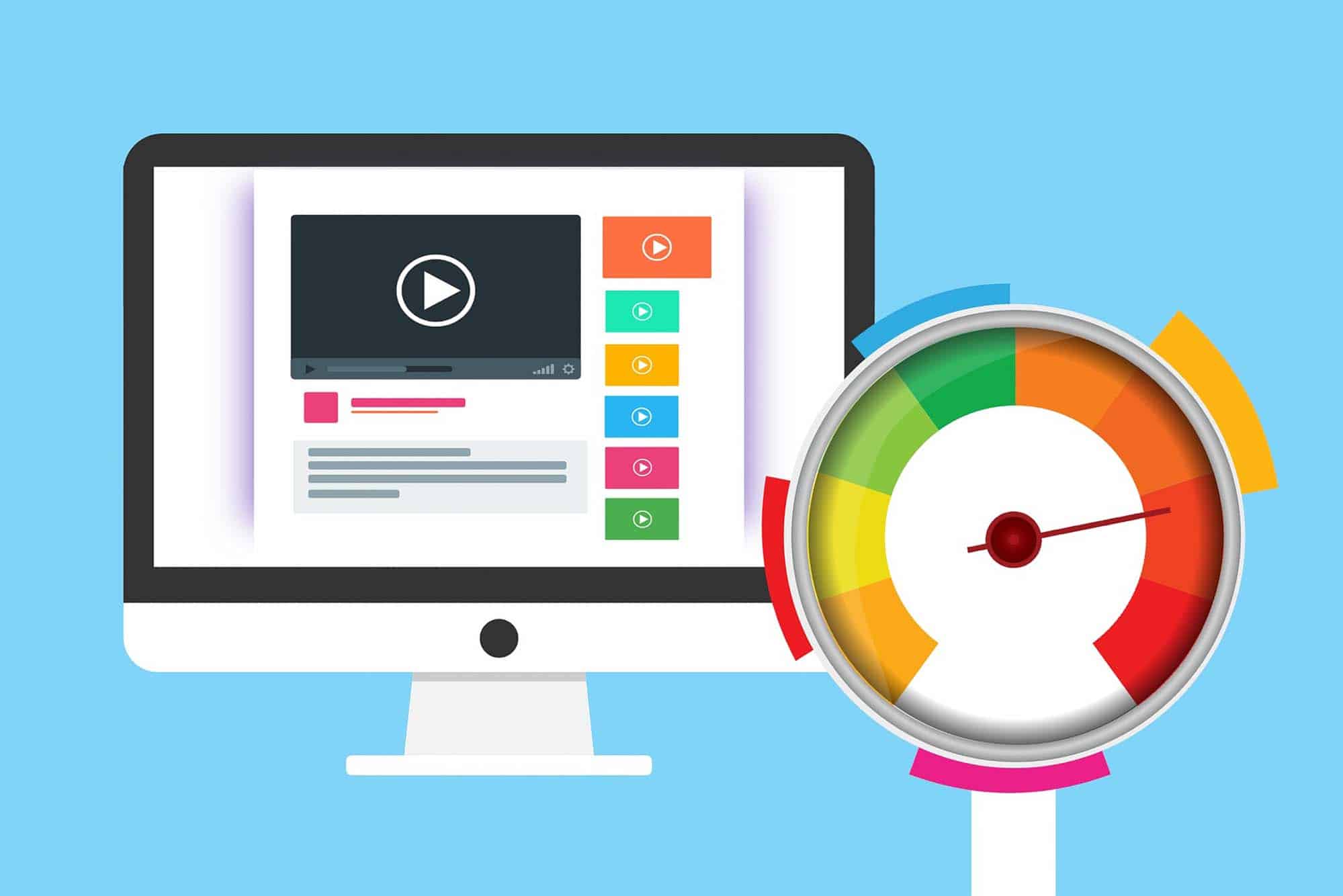Google Analytics provides remarkable free analytics tools to help marketers get more insights into their audience and improve their marketing efforts.
With so many tools to choose from, however, it can be overwhelming to learn and use them to inform your campaigns.
Fortunately, we’re here to discuss Google Analytics and help you get the most from these available tools for content marketing.
How Does Google Analytics Help Content Marketing?

Data is used to guide marketing strategy. Google has a huge collection of data related to your audience and your business, so you can use this mountain of data for actionable insights about how your efforts perform and how you can correct or improve.
It also helps you answer questions about your content marketing strategy, such as:
- Is my content marketing effective?
- What opportunities am I missing with my content marketing?
- Where am I losing customers, and how do I fix it?
- What are some of my trends?
- Are my efforts more or less effective?
- What content types perform the best?
- What are the gaps I missed?
The more in-depth data you can compile and the more questions you can answer, the better your insights you can gain to inform your strategy..
By using a methodical approach of reporting and metrics, you can determine if something is or isn’t working and why. You have the ability to analyze your traffic and audience to determine how customers interact with your business.
You can also decide if your content marketing is worth your investment, or find areas that are performing well, but can still be improved.
Here's how:
1. Define Your Goals
As we’ve discussed, Google Analytics has plenty of resources to measure your performance, but you should customize them to get valuable insights.
Defining goals is the best way to customize this process.
Four different goals that can be used to monitor your marketing strategy are:
- Destination: a specific location.
- Duration: session time.
- Pages/Screens per session: a user viewing a specific number of pages or screens.
- Event: a predefined action is triggered.
Google Analytics will help you set up your goals and walk you through the process.
2. Use On-Site Search
Websites can grow rather quickly, especially with a blog. With so much growing content, it can be difficult for customers to get what they’re looking for unless they get there from Google directly.
Fortunately, you can help your customers find your website and stay there with a search bar. This will not only get them to the page they’re looking for, but it also gives you insights and data through the Google Analytics on-site search terms report.
With an on-site search terms report, you’ll discover the keywords that are most searched on your website and compare them with those you’ve targeted. You may find that your content should be updated with a new keyword and you may even want to create new content to gain better engagement and more traffic.
You may notice a lot of traffic to a specific page within the search, which can be used to:
- Target pages with marketing campaigns.
- Link the page with high traffic to low-performing pages.
- Redesign the site to improve the visibility of your popular pages.
To perform this search in Google Analytics, log on to your account and go to the “Behavior” reports. From there, choose “Site Search” and “Search Terms.”
This takes you to the dashboard of your on-site search terms.
3. Optimize for Mobile
Mobile devices are used more by consumers than ever before, so it’s important that your site works well for mobile visitors. You should also verify that the changes you make work.
Log on to Google Analytics and find the “Audience” tab on the left side, then find the “Mobile” tab. Expand it to choose “Overview” to determine how well your site performs on mobile devices.
If you’ve defined a goal related to mobile traffic or conversions, it can be included in this report. On the right side, select the goal completion to display with mobile performance. With this information, you’ll be able to look at the conversion rate and goal completion over a time frame.
If you find that your mobile site version performs poorly in comparison to your desktop site version, you know that you need to do more to optimize your mobile site.
With Google’s recent mobile-first indexing policy, it’s vital that your site has high performance on mobile devices to keep your content marketing efforts effective.
4. Optimize Site Speed
Most sites load too slowly, meaning that they fall below the three-second benchmark for load times. In many cases, these sites take over nine seconds.
As the page load time increases from:
- One second to three second, the bounce rate increases by 32 percent.
- One second to five seconds, the bounce rate increases by 90 percent.
- One second to six seconds, the bounce rate increases by 106 percent.
- One second to ten seconds, the bounce rate increases by 123 percent.
This information matters for two reasons:
- Speed affects your bounce rate.
- Google factors page speeds into ranking factors.
So, having slow load times will have a detrimental impact on your search engine ranking and traffic. Before you’re able fix this problem, however, you need to diagnose it. It may be a site-wide problem, or it could just be a particular page, so you can identify the particular pages and make improvements.

In Google Analytics, you can find this information under “Site Speed” and “Page Timing.” This report shows you the pages on your site and their respective load times, so you can analyze the particular pages.
You can also find a “Speed Suggestions” report, which will provide recommendations for how to improve the speed of different pages.
Most sites load too slowly, meaning that they fall below the three-second benchmark for load times. In many cases, these sites take over nine seconds.
As the page load time increases from:
- One second to three second, the bounce rate increases by 32 percent.
- One second to five seconds, the bounce rate increases by 90 percent.
- One second to six seconds, the bounce rate increases by 106 percent.
- One second to ten seconds, the bounce rate increases by 123 percent.
This information matters for two reasons:
- Speed affects your bounce rate.
- Google factors page speeds into ranking factors.
So, having slow load times will have a detrimental impact on your search engine ranking and traffic. Before you’re able fix this problem, however, you need to diagnose it. It may be a site-wide problem, or it could just be a particular page, so you can identify the particular pages and make improvements.
5. Know Your Customers
Gaining an in-depth understanding of your customers is paramount to your content marketing efforts. In fact, many marketers have already prioritized personalized experiences.
By tapping directly into your customers’ needs, you can increase your sales and profits.
Google Analytics Affinity Category reports can help with this. Log on to Google Analytics and find the “Audience” section on the left side. Here you will find “Affinity Categories.” Here you will see which affinity groups have high traffic and low bounce rates or high conversions on your site.
For instance, you may find that you perform well with unexpected segments of your audience. This information will help you develop your future marketing campaigns.
Another helpful report for understanding your customers is the “Audience” report. You’ll find this under the “Audience” section, but you’ll choose “Overview.”
While the overview doesn’t give you in-depth information regarding your customers, it will help you target broad interests like devices and locations.
Final Thoughts
We hope that these tips help you gather information to inform your content marketing campaigns. Keep in mind that these are only a few of the tools available with Google Analytics. Google holds an incredible amount of data about your website that can be useful.
On top of that, it’s completely free. It’s important to make use of what Google Analytics has to offer, so you can learn what is and isn’t working and elevate your content marketing campaign.
Author: Rudy Labordus
Rudy Labordus is an Internationally acclaimed author, marketing strategist and speaker. He has been instrumental in helping launch and develop several multi million dollar businesses around Australia and excels in developing innovative, strategic and creative solutions that produce exceptional results for his clients.
